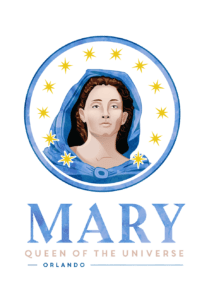
Alleluia, alleluia. Mary is taken up to heaven; a chorus of angels exults. Alleluia, alleluia. (Solemnity of the Assumption of the Blessed Virgin Mary)
Starting a garden is a lot of work. But with patience, with perseverance, with the help of God’s grace, it becomes a labor of love. What a privilege it is to share in the beauty of God’s creation. I love the image of God as the Gardener and we the garden. I contemplate how God cares for us and cultivates the beauty of his creation within us – weeding it, pruning it, watering it. When creation permits God to be its gardener, it remains beautiful, fragrant, fruitful. But when creation rejects God’s grace, the fruit becomes sour, bitter, rotten, distasteful, no good, ugly. The Master Gardener is ever so patient, merciful and kind. He recreates; he brings forth a Mystical Rose – so full of grace, so sweet a blossom, without stain, beautiful to the eyes of one’s heart. He calls his sweet rose Mary. Her heart is a beautiful garden of God’s love. A new Eden where God chooses to dwell. A place to take in the goodness of his creation and rest in it. Mary is the new Eve – faithful to God’s Word, obedient to his call, lowly in his sight. Our Beloved Mother is ever so open to allowing God to plant the seed of his love into the soil of her heart. She remains forever attentive to his loving instruction and perpetually receptive to God’s grace as he cultivates the seed of our salvation deep inside of her. The soil in Mary’s heart is good soil, holy soil, responsive soil – ever so vulnerable to God, ever so lowly, so helpless, so defenseless to the grace and the outpouring of God’s Spirit. She allows God to be God. She permits God to be the Gardener of her heart. And through the grace of God’s love, she brings forth the Blessed Fruit of her Womb; ever so innocent, ever so beautiful, ever so sweet – what a beautiful flower it is. Jesus also shows us how to permit God to cultivate the innocence within our own hearts. He shares the grace and benefits of permitting God to till the soil within our own hearts so that his Word may be planted deep within us and the seeds of God’s love can become efficacious in our lives. Let us learn from Jesus – let us learn from Mary to remain open, available, attentive, receptive, and vulnerable to God – the Gardner of our souls. “Blessed are those who hear the word of God and observe it.” (LK 11:28)




